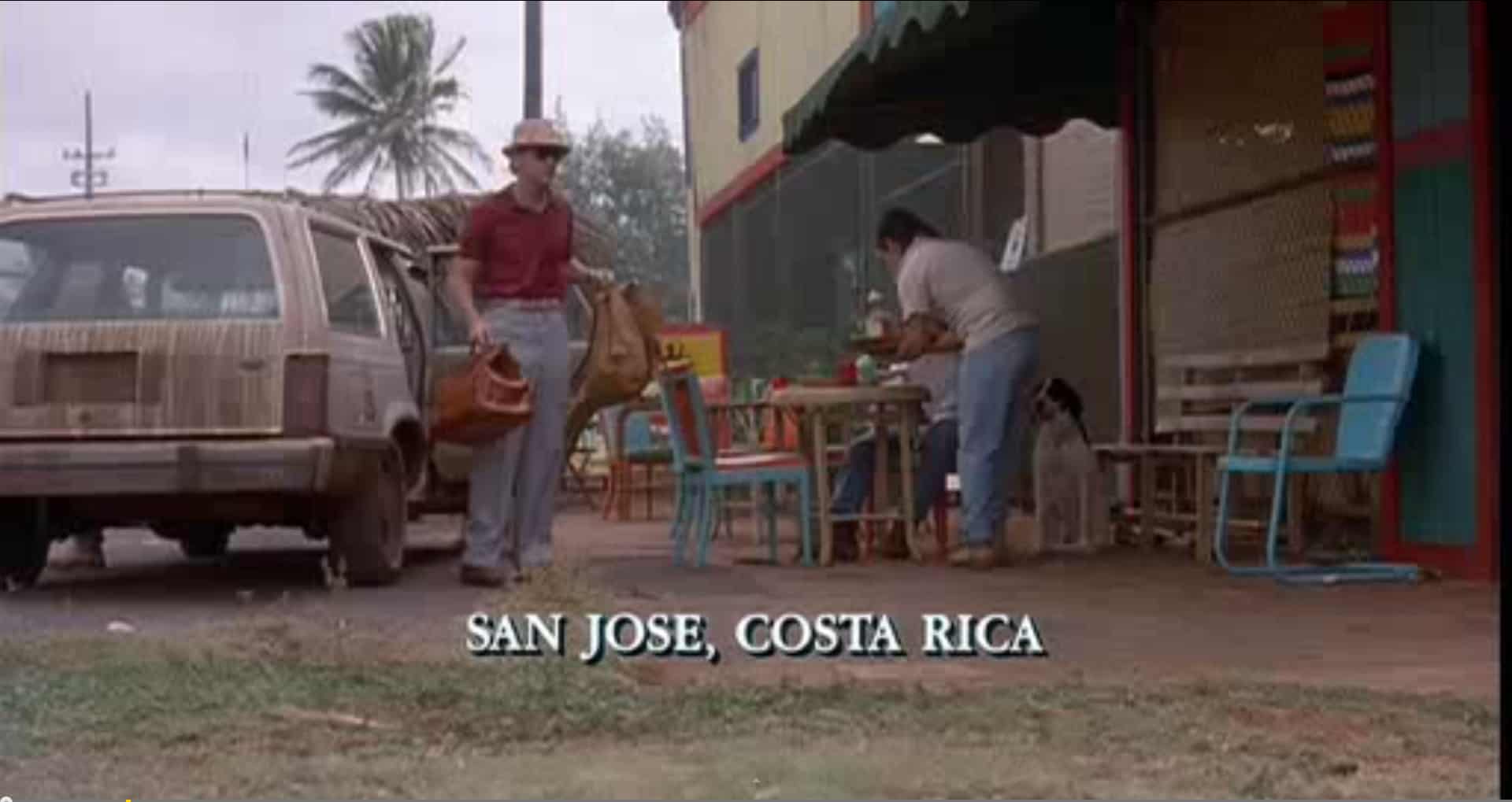“Jurassic Park” gets a bad rap from many Costa Ricans.
The story of John Hammond and his dinosaur island is set in Costa Rica. But the 1993 film adaptation barely mentions Costa Rica, and when it does, it’s notably wrong.
One memorable scene purportedly depicts San José … as a small, dusty beach town with chickens crowing in the background. Even if you give the movie the benefit of the doubt, all of San José province is landlocked, too.
More recently, Dean Cundey, director of photography for “Jurassic Park,” said he had considered filming the movie in Costa Rica because the story “takes place on an island.” As always, Costa Rica continues to not be an island.
But before it became an iconic film (and eventually, two trilogies), “Jurassic Park” was a 1990 novel by Michael Crichton.
And, as they say, the book is in many ways better than the movie. Let’s see if Crichton’s “Jurassic Park” did a better job depicting Costa Rica.
* * * *
Jurassic Park: “She liked the isolation of Bahía Anasco, and the friendliness of its people. Costa Rica had one of the twenty best medical systems in the world, and even in this remote coastal village, the clinic was well maintained, amply supplied.”
Verdict: Accurate.
First things first: Bahía Anasco, far as we can tell, is a fictitious village. That artistic liberty is fine by us. Besides, Crichton got the rest right: Costa Ricans are indeed known for their friendliness. Costa Rica’s health system is consistently ranked very highly. At the turn of the century, the World Health Organization ranked it 36th worldwide. More recently, the Global Competitiveness Index placed Costa Rica 25th worldwide in health.
* * * *
Jurassic Park: “The Costa Ricans were not especially superstitious, but she had heard the hupia mentioned in the village before. They were said to be night ghosts, faceless vampires who kidnapped small children. According to the belief, the hupia had once lived in the mountains of Costa Rica, but now inhabited the islands offshore.”
Verdict: Inaccurate.
The hupia isn’t a Costa Rican superstition. And Crichton had so many others to choose from! La Segua, El Cadejo, and La Llorona are all examples of supernatural creatures that are well-known in Costa Rican folklore. Admittedly, the legend of the hupia in “Jurassic Park” is used to provide specific context when dinosaurs begin attacking children in mainland Costa Rica.
* * * *
Jurassic Park: “Mike Bowman whistled cheerfully as he drove the Land Rover through the Cabo Blanco Biological Reserve, on the west coast of Costa Rica. It was a beautiful morning in July, and the road before him was spectacular: hugging the edge of a cliff, overlooking the jungle and the blue Pacific. According to the guidebooks, Cabo Blanco was unspoiled wilderness, almost a paradise.”
Verdict: Accurate.
Crichton does well in describing Costa Rica’s protected areas. (He also name-drops Carara more than once.) It makes sense he’d choose Cabo Blanco since it’s on the Pacific Coast — closest to the dinosaur-filled, fictitious Isla Nublar — and was Costa Rica’s first major nature reserve.
Yes, Cabo Blanco is spectacularly beautiful. But you wouldn’t be able to drive a Land Rover “through” the reserve. There are no public roads, and even if there were, July is rainy season — so the road would probably be far from enjoyable.
* * * *
Jurassic Park: “When they arrived, it turned out Ellen had an appointment to see a plastic surgeon in San José. That was the first Mike Bowman had heard about the excellent and inexpensive plastic surgery available in Costa Rica, and all the luxurious private clinics in San José.”
Verdict: Accurate.
Tens of thousands of people visit Costa Rica each year for cheaper, high-quality private healthcare. In 2011 alone, 48,000 tourists entered the country to undergo a medical or wellness procedure. It’s too bad Ellen and Mike’s vacation ended with their young daughter being mauled by a dinosaur.
* * * *
Jurassic Park: “Only seventy-five miles wide at its narrowest point, the country was smaller than the state of Maine. Yet, within its limited space, Costa Rica had a remarkable diversity of biological habitats: seacoasts on both the Atlantic and the Pacific; four separate mountain ranges, including twelve-thousand-foot peaks and active volcanoes; rain forests, cloud forests, temperate zones, swampy marshes, and arid deserts.”
Verdict: Accurate.
Costa Rica is well-known for its biodiversity, and Crichton describes it well. One caveat: While some parts of Costa Rica can get particularly dry, none are classified as deserts. But we’ll give Crichton extra credit for mentioning Costa Rica’s deforestation problem, which was particularly rampant in the 1990s.
* * * *
Jurassic Park: “I was thinking,” Muldoon said, “that, when the Costa Ricans come, they will probably imagine this island to be a military problem. Something to destroy as soon as possible. … They’ll bomb it from the air. Perhaps napalm, perhaps nerve gas as well. But from the air.”
Verdict: Inaccurate.
Costa Rica is going to bomb the island? With what army?
* * * *
Jurassic Park: “Each day it seemed to Grant he was taken to another government office, where he was questioned by another courteous, intelligent government officer.”
Verdict: Inconclusive.
Grant went to different Costa Rican government offices every day and left with the impression that the officials were all courteous and intelligent? Not likely.
Grant had to visit a different office every day, because he’d waited hours in line before each meeting? Now that’s the Costa Rica we all know and love.






